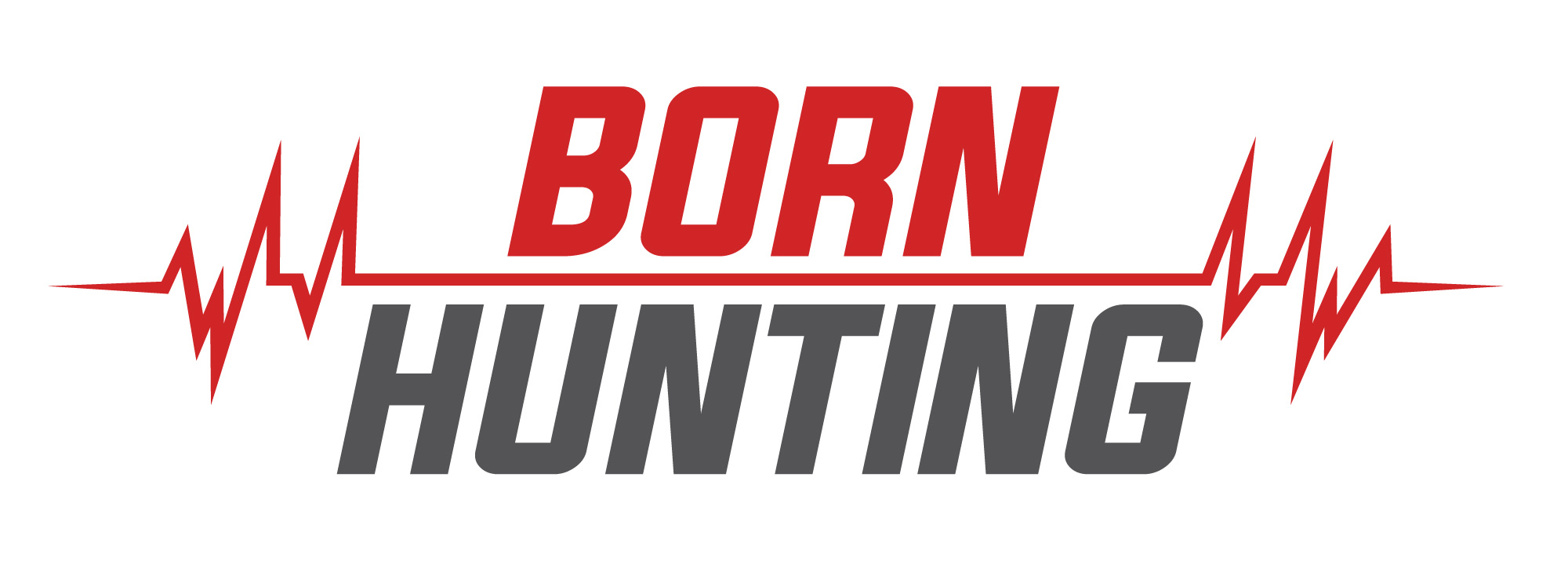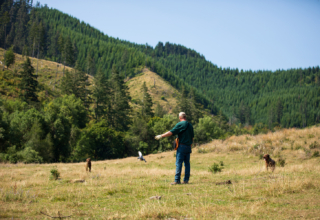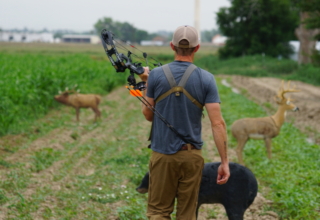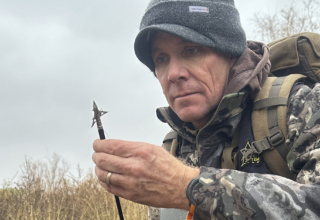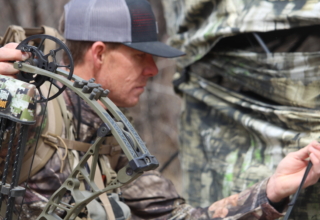Leupold’s top-end VX-6HD scopes promise durability, accuracy, clarity, and one of the most simple but effective ballistic dial systems on the market.
by Jace Bauserman
Most of my hunts are with a stick-and-string. However, my affinity for taking to the woods with various calibers of bolt-action rifles has grown over the past four years.
As my interest in rifle hunting grew, so did my knowledge of the necessary equipment needed. A savvy bowhunter, I know my bow is only as good as the accessories I put on it, so I’m very particular about those accessories. Any serious rifle hunter knows the scope they mount to their favorite hunting rifle is critical to their success. For this reason, I’ve leaned on Leupold scopes for the past three hunting seasons.
Made in Leupold’s Beaverton, Oregon, factory, these USA-made scopes are remarkable. Hardcore hunters make them for hardcore hunters, and they have served my needs exceptionally well. From the VX-3HD to the VX-5HD and, most recently, the VX-6HD, these top-tier scopes promise remarkable optical clarity, undeniable reliability, and a simple yet sophisticated ballistic dial system that boosts accuracy.
First Impressions
Last fall, I harvested three bulls with all three PRC calibers. While the rifle models differed, they all had one thing in common: they all wore VX-5HD models.
While I have a deep affection for the VX-5HD, I was ecstatic to discover the VX-6HD, a scope that takes the VX-5HD to a whole new level. My 3-18×44 model was destined to crown my Browning X-Bolt 2 Pro McMillan SPR Carbon Fiber. With an African safari on the horizon, pairing a Browning masterpiece with Leupold’s pinnacle scope was exciting.

The VX-6HD boasts a 30mm tube, with the standout feature being the CDS dial system. While the VX-3HD and VX-5HD come with the CDS Elevation Dial, the VX-6HD takes it up a notch with both an Elevation Dial and a Windage Dial. This system, which I’ll delve into further, epitomizes simplicity and effectiveness, providing the most straightforward yet efficient yardage dial system.

Another must-mention feature is the removable throw lever, which makes magnification adjustments quick and easy. Aluminum flip-back lens covers add optical protection, and the efficient flip-and-lock system means that when open, the covers attach to the scope’s outer housing to reduce clutter, noise, and the frustration that comes with plastic or rubber lens covers.

Motion sensor technology is on the scope’s left side. After five minutes, this feature automatically boosts battery longevity by deactivating the illuminated reticle. On the flip side of the coin, illumination reignites as soon as movement is detected.
The scope arrived with Leupold rings and bases, and inside the box, I found a redeemable voucher for a customized CDS Dial.
Mounting The VX-6
I’ve become fond of Real Avid’s Scope Mounting Kit, and following Leupold’s torque recommendations for the base screws, I tightened them down, set the scope inside the bottom rings, and added the top rings.
Everyone has a preference for how they mount a scope. I prefer to tighten the top rings enough to allow the scope to move slightly. This enables me to set proper eye relief and leveling.
Take your time when setting eye relief. Typically, I test my eye relief off the bench, offhand, and using shooting sticks. Sometimes, I even check my eye relief in various lighting conditions before using my Real Avid Smart-Torq driver to finish tightening the top rings.

Over the years, I’ve discovered that if you follow Leupold’s torque settings strictly, you will cause no damage to your scope, and it takes an act of God for it to move.
Field Test
Too often, my field test doesn’t include a hunt. At some point, it does, but usually, I have a product for weeks and sometimes months before I get to take it afield. That wasn’t the case with the VX-6HD.
Knowing I was heading to the Dark Continent on my first African Safari, Leupold sent me a pair of CDS-ZL2 ZeroLock elevation dials. One dial was for Winchester’s 300 Win Mag 190 Grain Expedition Big Game AccuBond LR, and another for a 195-grain Winchester bullet we would be testing on the hunt. I will have more on this bullet for you in the coming months.
When opting for a VX-6HD, you won’t get pre-made dials, but the process is straightforward. All you need to do is get a feet-per-second rating, the bullet’s BC, the elevation you hunt at, and a few other things, and Leupold will create a dial for you. I have several different dials for some of my rifles because I enjoy shooting and testing various bullets. If you’re like me, you’ll want multiple dials, and after redeeming your voucher for your free dial, others run $80 per dial.
With my Browning zeroed at 100 yards, I used the included set screw and removed the standard dial, and added my 190-grain dial. My first shot was a steel plate at 375 yards. The wind was calm, and I was shooting off a bench. When the shot broke, the clang of the steel was immediate. Instantly, I loaded another round and, without looking, turned the dial counterclockwise to the ZeroLock, which is my 100-yard setting. I sent another round and punched the orange bullseye on paper.

You won’t find a more straightforward and effective dial system. While there are more advanced ballistic dials on the market, none are more straightforward. With the ZeroLock, you never have to worry about returning to your zero. I tested the rifle/scope combo with both dials and loads it to 600 yards, and every shot rang steel.
Between every 100-yard mark on the dial, there is a 50-yard mark, which is fantastic. Dialing to the 25- and 75-yard marks between each 100-yard distance is also easy. For instance, if my range is 563 yards, I dial the next dash beyond the marked 550 line. The more you play with your dial and the loads, the more you learn.

Africa!
My first African animal was a 2,000-pound eland bull—the largest of Africa’s spiral-horned antelope. I was hunting with Charl le Roux of Rosedale Safaris, and he had me on the sticks 256 yards from the massive bull. I dialed to 250 yards, took a breath, and squeezed. The hit was good, but it was a bit back. Unfortunately, the brush was so thick that I couldn’t get another shot at the bull until he was 422 yards away. I quickly manipulated the dial to 425 yards, adjusted my magnification to 15 power, and sent a second round. The 190-grain AccuBond LR hit the center lungs. The bull staggered and dropped.

Over a week of hunting, I shot 10 African animals between 100 and 534 yards. I shot animals at first light, during the day’s heat, and in the fading light. The scope’s Professional-Grade Optical system promises remarkable edge-to-edge clarity and excellent color, and this scope gathers light remarkably well.
Another outstanding feature of the scope is the eight brightness settings, and the electronic reticle will flash if your scope isn’t level, which further prevents errant shots.
The South African winds were calm, and I never had to utilize my windage dial. However, I tested it on the range several times before the hunt. It’s an effective windage system. On the hunt, though, I showed one of the PHs how the windage dial system worked. The problem was that I forgot to reset it. I always double-check that my elevation is correct and that my windage dial is zeroed before shooting an animal. On my 331-yard Impala, my windage dial was set to what I’d left it at while showing the PH. I immediately zeroed it, settled my crosshairs, and made a perfect shot.
Over the years, I’ve used Leupold optics—scopes, rangefinders, binoculars, etc.—on countless hunts. All their products have earned my complete trust; if you give them a go, you won’t be disappointed.
